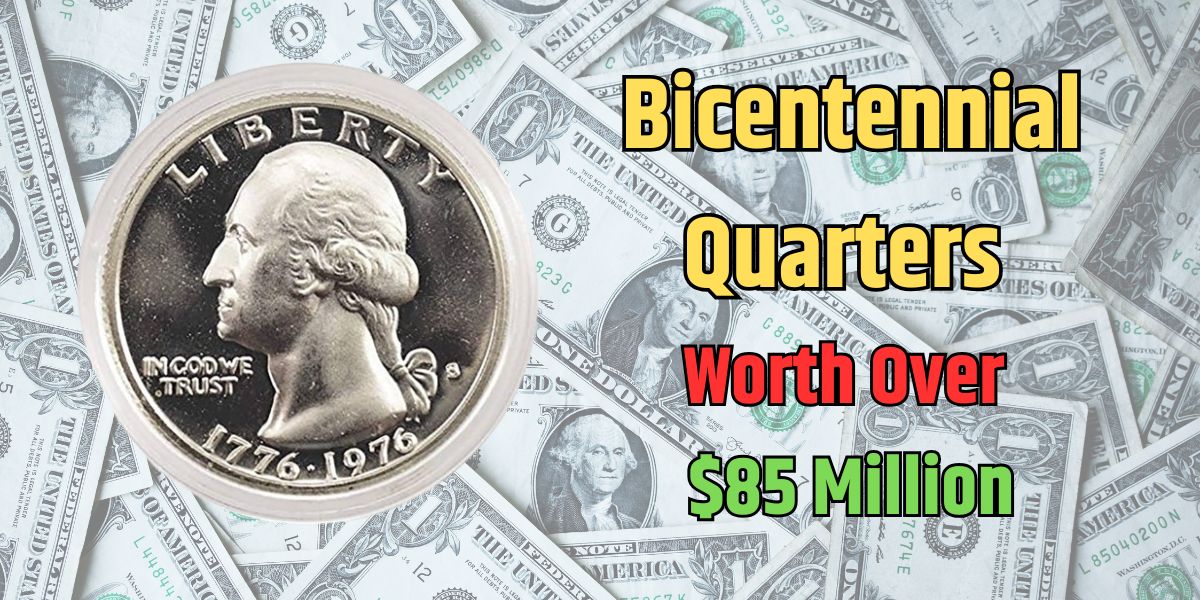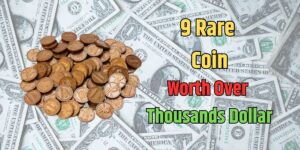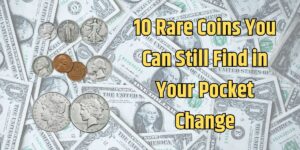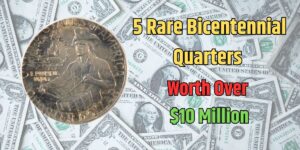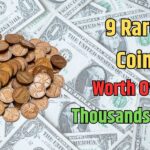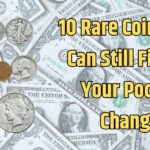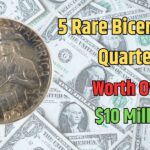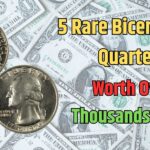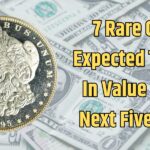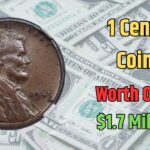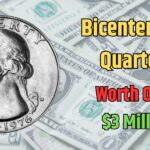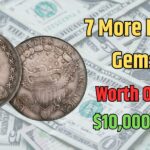The 1976 Bicentennial Quarter is a striking piece of American history, created to celebrate the 200th anniversary of the United States’ independence. While millions were minted, only a few have achieved remarkable value due to their rarity and condition. Some of these quarters have reached record-breaking prices, making them a coveted find for collectors. Here’s a closer look at what makes these coins special, the most valuable versions, and how to identify a rare Bicentennial Quarter.
What Makes Bicentennial Quarters Unique?
The Bicentennial Quarter stands out for its dual date, “1776–1976,” and its reverse design, created by Jack L. Ahr. This design features a colonial drummer and a torch surrounded by 13 stars, symbolizing the original colonies. Produced in both copper-nickel clad and 40% silver versions, these coins were struck in 1975 and 1976.
Collectors prize these quarters not only for their historical significance but also for their unique design and composition. However, it is the rare examples in exceptional condition that command the highest prices.
The Two Most Valuable Bicentennial Quarters
Among the millions of Bicentennial Quarters minted, two versions have achieved extraordinary value due to their rarity and flawless condition.
1. 1976-S Silver Proof Quarter (PR70 Deep Cameo)
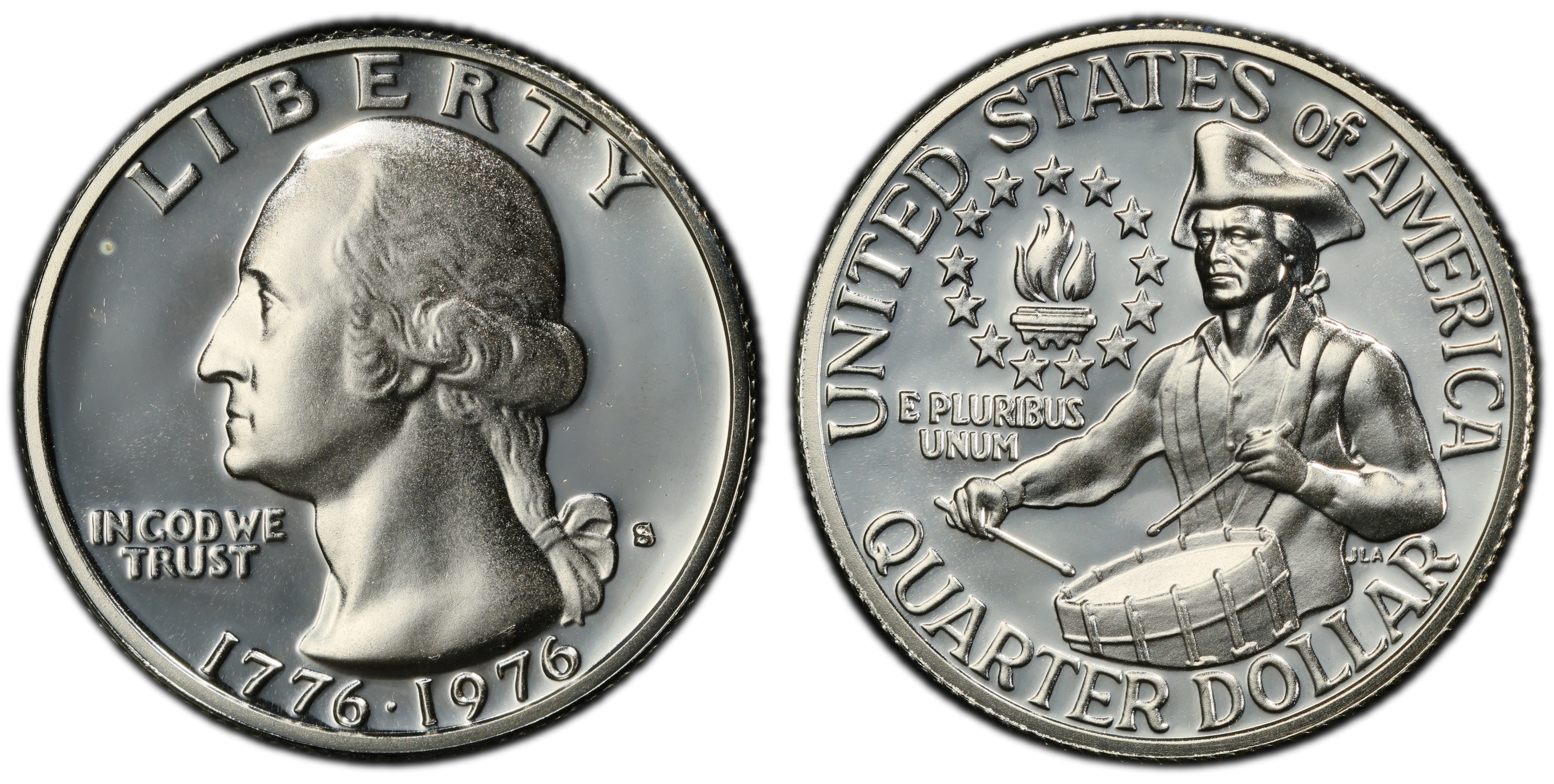
- Material: Composed of 90% silver.
- Finish: Features a mirror-like surface with frosted design elements, known as “Deep Cameo.”
- Grade: PR70 (Perfect Condition).
- Value: A record-breaking $50 million at auction.
This coin is a top collector’s item due to its high silver content, flawless condition, and striking appearance. Achieving a PR70 grade is rare, making this coin highly desirable.
2. 1976-D Type 2 Quarter
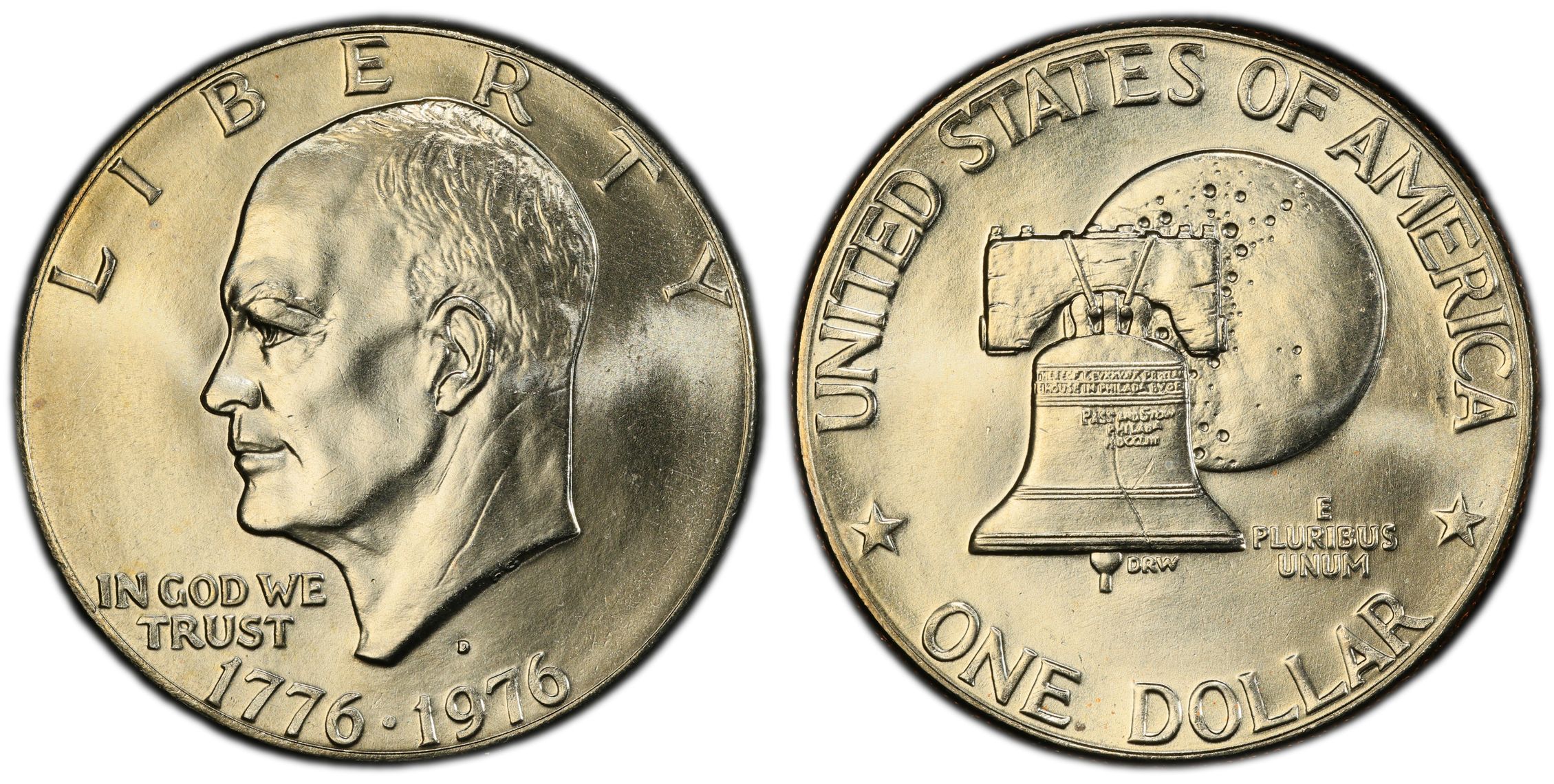
- Mint: Struck at the Denver Mint.
- Material: Copper-nickel clad.
- Grade: MS68 or higher.
- Value: Up to $6,462.50.
The Type 2 version is distinguished by its sharp design and well-defined lettering. While more common than the silver proof, examples in top condition are rare and can command impressive prices at auction.
Key Factors Driving Bicentennial Quarter Values
Several factors contribute to the astronomical prices some Bicentennial Quarters have reached:
| Factor | Impact |
|---|---|
| Condition (Grade) | Coins in perfect condition, such as PR70 or MS68, are exceedingly rare. |
| Material Composition | Silver quarters are inherently more valuable due to their precious metal content. |
| Historical Significance | Commemorating the U.S. Bicentennial adds cultural and historical value. |
| Rarity | Limited availability in pristine condition makes these coins highly sought-after. |
How to Identify Rare Bicentennial Quarters
To determine if your Bicentennial Quarter is valuable, check for the following features:
- Mint Mark: Look for “S” (San Francisco Mint) for proof coins or “D” (Denver Mint) for the Type 2 quarter.
- Condition: Coins in top grades, such as PR70 Deep Cameo or MS68, hold the highest value.
- Material: Proof coins with 90% silver content are more valuable.
- Errors: Look for minting errors like doubled dies or other unique features that increase rarity.
Where to Find Rare Bicentennial Quarters
While finding a high-value Bicentennial Quarter is rare, there are places to look:
- Loose Change: Carefully check quarters in circulation.
- Coin Shops: Many dealers sell or trade collectible coins.
- Online Auctions: Sites like eBay or Heritage Auctions often list rare Bicentennial Quarters.
- Estate Sales: Old collections may include valuable coins.
Common vs. Rare Bicentennial Quarters
| Characteristic | Common Bicentennial Quarters | Rare Bicentennial Quarters |
|---|---|---|
| Material | Copper-nickel clad | 90% silver or high-grade copper-nickel |
| Condition | Worn from circulation | PR70 Deep Cameo or MS68+ |
| Value | Face value ($0.25) | Up to $50 million |
Most Bicentennial Quarters in circulation hold little to no added value. However, rare examples with pristine conditions, unique errors, or silver content can be worth a fortune. Knowing what to look for and where to search could lead to an incredible discovery.
FAQs
How can I tell if my Bicentennial Quarter is silver?
Check the edge of the coin. Silver coins will have a uniform silver edge, while copper-nickel quarters will show a copper core.
What is a Type 2 Bicentennial Quarter?
Type 2 quarters have sharp, refined lettering on the reverse compared to the thicker lettering of Type 1 coins.
Can I still find Bicentennial Quarters in circulation?
Yes, but most are worn and hold no additional value. Rare, high-grade examples are unlikely to be found in loose change.
What makes proof coins special?
Proof coins are struck with polished dies, giving them a mirror-like finish and sharp details, often reserved for collectors.
Are all high-grade coins worth millions?
Not all high-grade coins fetch millions, but their rarity, material, and historical significance can drive their value significantly higher.
